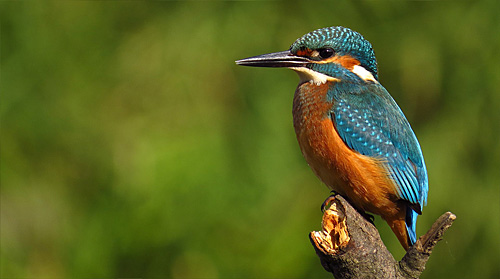BIRD WATCHING
Skadar lake is a habitat for 281 species of birds, which represents around 50% of the total number
of European species, and it is one of the richest swampy areas in Europe.
Mixed colonies of pelicans, cormorants, tumbler pigeons, herons and other bird species are found in
almost wild swampy areas of Skadar lake. Bird watching on the lake can be organized from the boat or from
the special platforms made for that purpose. The best period for bird watching is winter or autumn, because
then big flocks of migratory birds fly over the lake.
Observation towers for the birds:
- Stanaj
- Žabljačke meadows
- Plavnica
- Raduš
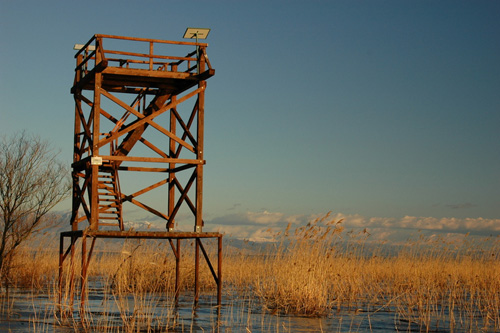
THE MOST IMPORTANT BIRD SPECIES
Great Crested grebe
Great Crested grebes are between 46 and 51centimetres long, and their wingspan is between 59 and 73 cm. They weigh from 800 to 1400 grams. In summer time these birds are recognizable for their sumptuous feathers, they swim in the middle of the lake and every once in a while they dive into the water and disappear (for up to one minute!). They have long necks, white cheeks, and black heads with brown red or black crests. They got the name after the feathers that stands out on top of their heads. Their toes are trimmed with leather folds. Their nape and back are brown. Representatives of both genders look the same. When in danger, they put the crest close to their heads. When they don`t have sumptuous feathers, they don`t have colourful crest and look like a diver.
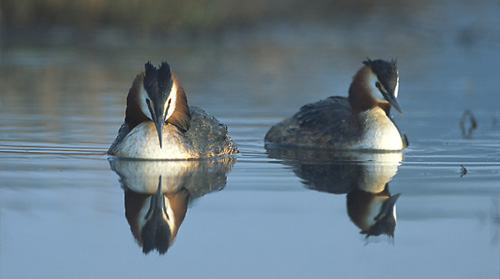
Dalmatian pelican
It is between 170 and 190 cm long, with wingspan over 3 m. It weighs between 11 and 15 kg. It has long curly
feathers on its head, after which it was named. It is grey and white, with grey legs and orange lower part of
its beak that turns red during mating. There are few black feathers at the end of its wings. Its feet and legs
are of leaded grey colour. It announces its present by hissing and rattling.
It normally eats fish up to
50 cm long. It eats approximately 1 kg of food a day. It migrates on short distances. Dalmatian pelican looks
rather elegant while flying. It has posture similar to heron`s.
Nesting is performed in large colonies.
It builds floating nests, or nests on the brink of water. It nests once a year, with 2 to 3 white eggs.
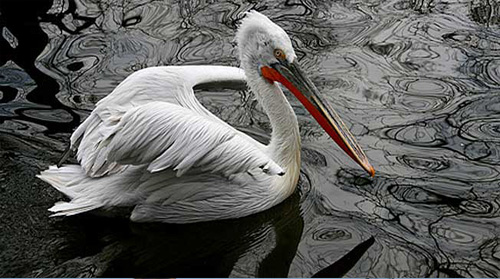
Great cormorant
Great cormorant can be observed by ornithologists from five continents, because it is the most outspread type in
cormorant family, which builds its nest on typical places for its kind, but also on the places where you would not
expect to see a nest. Still, for nesting it normally chooses rocky coastal areas, or beaches on a lake or sea. It
also rests on places like these.
It can weigh form 1.5 up to 5.3 kilos (the average weight is around 3 kilos),
and it can be from 70 to 120 centimetres long, with the maximum wingspan of 160 centimetres. It has a yellow stain
around its eyes and beak, which turns white normally during mating season. It lives in The Old World, which includes
Europe, Asia and Africa, as well as on the coast of Atlantic Ocean.
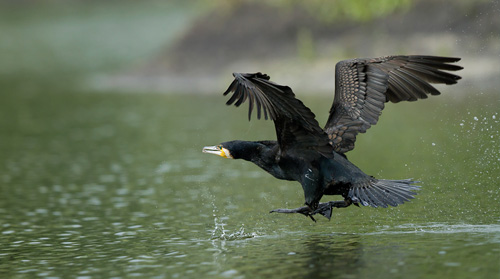
Great white heron
Great white heron (lat. Ardea alba) – is a type of bird from heron family. A small number of birds can
show off with such a natural beauty and elegance as this one. This bird with rather long neck, covered in white
feathers, lives in numerous colonies always close to water, next to ponds, swamps and rivers which coasts are
covered in green. It is form 56 to 74 cm long, and it weighs 1100 grams. It normally eats fish and small animals
that can be found in water. What stands out the most on its appearance are the feathers on its shoulders, much
longer and more lavishing comparing to other parts of its body, while the feathers on its nape stand straight.
Great white heron builds its nests of interlaced branches and twigs, in the middle of a thick overgrowth.
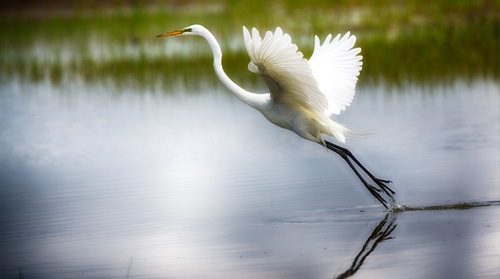
Kingfisher
Kingfisher, or Kingfisher Fisherman (lat. Alcedo atthis), is the only type from river kingfisher family that
lives in Middle Europe. It lives near moderately fast flowing or stagnant water, which has to be clear and
filled with small fish. It usually eats fish, but it also eats water insects, small crabs and tadpoles.
Kingfisher, like all the types from this family, has short, tight body with short legs, short tail feathers
and wide wings. Its head, which is around 4 cm long, with long pointed beak is placed on a short neck. On the
upper side, the colour of feathers goes from cobalt to turquoise blue, while on the back it has a glittering blue
stripe. The body length is between 16 and 18 cm, and it weighs between 34 and 46 grams. Wingspan is around 25 cm.
